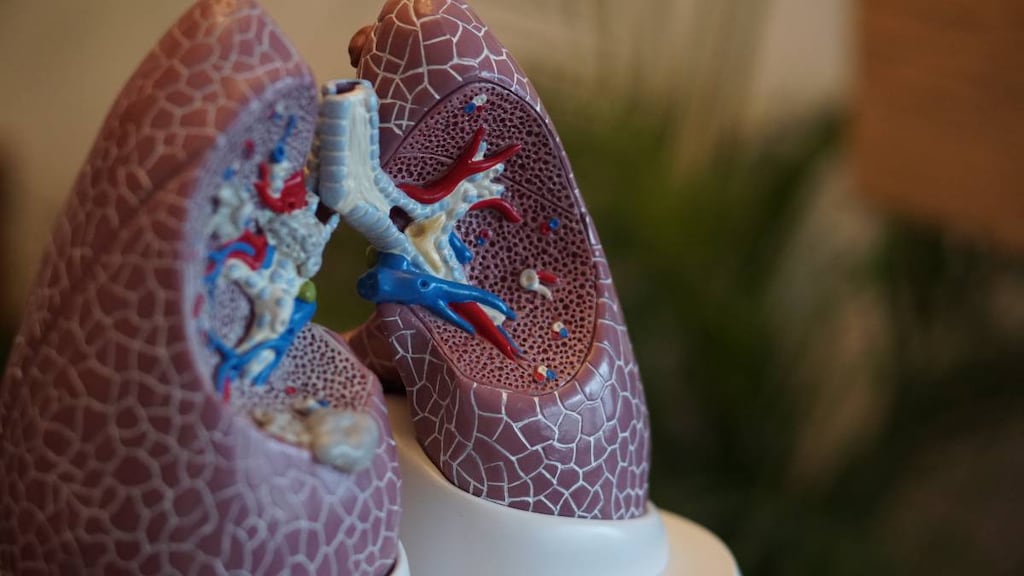Dosage Forms
Excipient information presented when available (limited, particularly for generics); consult specific product labeling.
Solution, Ophthalmic:
Zymaxid: 0.5% (2.5 mL) [contains benzalkonium chloride, edetate disodium]
Generic: 0.5% (2.5 mL)
Pharmacology
Mechanism of Action
Gatifloxacin is a DNA gyrase inhibitor, and also inhibits topoisomerase IV. DNA gyrase (topoisomerase II) is an essential bacterial enzyme that maintains the superhelical structure of DNA. DNA gyrase is required for DNA replication and transcription, DNA repair, recombination, and transposition; inhibition is bactericidal.
Pharmacokinetics/Pharmacodynamics
Absorption
Ophthalmic: Not measurable (<5 ng/mL)
Use: Labeled Indications
Conjunctivitis: Treatment of bacterial conjunctivitis caused by Staphylococcus aureus, Staphylococcus epidermidis, Streptococcus mitis group, Streptococcus oralis, Streptococcus pneumoniae, and Haemophilus influenzae.
Use: Off Label
Bacterial keratitisbyes
Data from a limited number of patients in two small randomized trials support the use of gatifloxacin in the treatment of bacterial keratitis Parmar 2006, Shah 2010. Additional data may be necessary to further define the role of gatifloxacin for this condition.
Based on the American Academy of Ophthalmology Preferred Practice Pattern Guidelines for Bacterial Keratitis, gatifloxacin is an effective and recommended agent in the management of bacterial keratitis.
Contraindications
Hypersensitivity to gatifloxacin, other quinolones, or any component of the formulation
Dosage and Administration
Dosing: Adult
Bacterial conjunctivitis: Ophthalmic:
Zymar [Canadian product]:
Days 1 and 2: Instill 1 drop into affected eye(s) every 2 hours while awake (maximum: 8 times/day).
Days 3 to 7: Instill 1 drop into affected eye(s) 4 times/day while awake.
Zymaxid:
Day 1: Instill 1 drop into affected eye(s) every 2 hours while awake (maximum: 8 times/day).
Days 2 to 7: Instill 1 drop into affected eye(s) 2 to 4 times/day while awake.
Bacterial keratitis (off-label use): Ophthalmic: Instill 1 drop into affected eye(s) every 1 hour around the clock until healing begins (usually 48 to 72 hours); dosing frequency is then gradually reduced until the ulcer is completely healed, at which point, treatment can be discontinued (Parmar 2006; Shah 2010). One suggested tapering regimen is as follows: Days 3 to 6: Instill 1 drop into affected eye(s) every 2 hours around the clock; Days 7 to 9: Instill 1 drop into affected eye(s) every 2 hours while awake; Day 9 and on: Instill 1 drop into affected eye(s) every 6 hours and continue at this frequency until complete healing of ulcer (Shah 2010). Note: For central or severe keratitis, a loading dose of instillation every 5 to 15 minutes for the first 30 to 60 minutes may be considered (AAO 2013).
Dosing: Geriatric
Refer to adult dosing.
Dosing: Pediatric
Bacterial conjunctivitis: Ophthalmic: Children ≥1 year and Adolescents: Zymaxid: Day 1: Instill 1 drop into affected eye(s) every 2 hours while awake (maximum: 8 times/day). Days 2 to 7: Instill 1 drop into affected eye(s) 2 to 4 times/day while awake.
Administration
For topical ophthalmic use only; not for injection. Avoid touching tip of applicator to eye, fingers, or other surfaces.
Storage
Store between 15°C to 25°C (59°F to 77°F); protect from freezing.
Drug Interactions
There are no known significant interactions.
Adverse Reactions
1% to 10%:
Central nervous system: Headache
Endocrine & metabolic: Chemosis
Gastrointestinal: Dysgeusia
Ophthalmic: Conjunctival hemorrhage, conjunctival irritation, conjunctivitis (worsening), decreased visual acuity, dry eye syndrome, eye discharge, eye irritation, eye pain, eye redness, eyelid edema, increased lacrimation, keratitis, papillary conjunctivitis
<1%, postmarketing, and/or case reports: Anaphylaxis, angioedema (including facial edema, oral edema, pharyngeal edema), blepharitis, blurred vision, dyspnea, eye pruritus, hypersensitivity reaction (including allergic dermatitis, eye allergy), nausea, pruritus (including skin rash), Stevens-Johnson syndrome, swelling of eye (including corneal edema, conjunctival edema), urticaria
Warnings/Precautions
Concerns related to adverse effects:
- Hypersensitivity reactions: Hypersensitivity reactions, including anaphylactic reactions, angioedema (including pharyngeal, laryngeal, or facial edema), dyspnea, urticaria, and itching, have been reported (even following a single dose) with topical ophthalmic gatifloxacin. Rare cases of Stevens-Johnson syndrome were also reported. If an allergic reaction occurs, discontinue use.
- Superinfection: Prolonged use may result in fungal or bacterial superinfection. If superinfection is suspected, institute appropriate alternative therapy.
Special populations:
- Contact lens wearers: Contact lenses should not be worn during treatment of ophthalmic infections.
Dosage form specific issues:
- Appropriate use: For topical ophthalmic use only. Do not inject ophthalmic solution subconjunctivally or introduce directly into the anterior chamber of the eye (may cause corneal endothelial cell injury).
Pregnancy
Pregnancy Considerations
Systemic concentrations of gatifloxacin following ophthalmic administration are below the limit of quantification. If ophthalmic agents are needed during pregnancy, the minimum effective dose should be used in combination with punctal occlusion for 3 to 5 minutes after application to decrease potential exposure to the fetus (Samples 1988).
Patient Education
What is this drug used for?
- It is used to treat eye infections.
Frequently reported side effects of this drug
- Change in taste
- Eye irritation
- Eye pain
Other side effects of this drug: Talk with your doctor right away if you have any of these signs of:
- Vision changes
- Eye or eyelid swelling
- Dizziness
- Passing out
- Fast heartbeat
- Abnormal heartbeat
- Sweating a lot
- Stevens-Johnson syndrome/toxic epidermal necrolysis like red, swollen, blistered, or peeling skin (with or without fever); red or irritated eyes; or sores in mouth, throat, nose, or eyes
- Signs of a significant reaction like wheezing; chest tightness; fever; itching; bad cough; blue skin color; seizures; or swelling of face, lips, tongue, or throat.
Note: This is not a comprehensive list of all side effects. Talk to your doctor if you have questions.
Consumer Information Use and Disclaimer: This information should not be used to decide whether or not to take this medicine or any other medicine. Only the healthcare provider has the knowledge and training to decide which medicines are right for a specific patient. This information does not endorse any medicine as safe, effective, or approved for treating any patient or health condition. This is only a brief summary of general information about this medicine. It does NOT include all information about the possible uses, directions, warnings, precautions, interactions, adverse effects, or risks that may apply to this medicine. This information is not specific medical advice and does not replace information you receive from the healthcare provider. You must talk with the healthcare provider for complete information about the risks and benefits of using this medicine.




